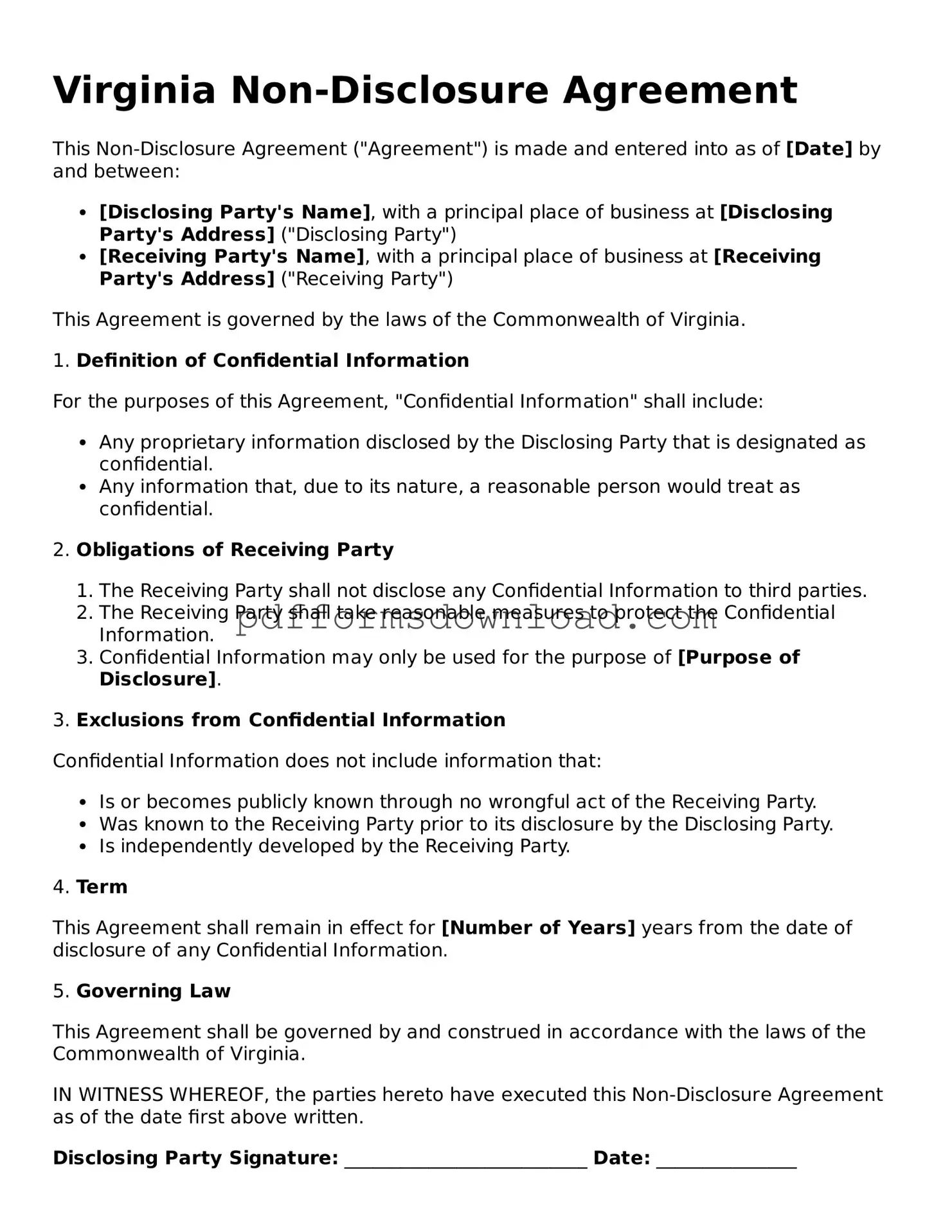What is a Virginia Non-disclosure Agreement (NDA)?
A Virginia Non-disclosure Agreement is a legal document designed to protect confidential information shared between parties. It ensures that sensitive information remains private and cannot be disclosed to unauthorized individuals or entities. This agreement is commonly used in business settings, especially when discussing trade secrets, proprietary information, or any sensitive data that needs protection during negotiations or collaborations.
Who should use a Virginia NDA?
Any individual or business that plans to share confidential information with another party should consider using a Virginia NDA. This includes entrepreneurs, startups, established businesses, and freelancers. Whether you are discussing potential partnerships, sharing business plans, or revealing innovative ideas, an NDA can help safeguard your interests and maintain confidentiality.
What are the key components of a Virginia NDA?
A typical Virginia NDA includes several important elements. These are the definition of confidential information, obligations of the receiving party, the duration of confidentiality, and any exclusions from confidentiality. It is crucial that both parties clearly understand what information is considered confidential and the responsibilities they have to protect it.
How long does a Virginia NDA last?
The duration of a Virginia NDA can vary based on the agreement between the parties. Typically, the confidentiality obligations last for a specified period, often ranging from two to five years. However, some agreements may state that certain information remains confidential indefinitely. It is important to discuss and agree on the duration before signing the NDA.
What happens if someone breaches a Virginia NDA?
If a party breaches the terms of a Virginia NDA, the other party may have legal options available. This can include seeking damages for any losses incurred due to the breach. The NDA may also specify the steps that should be taken in the event of a breach, such as mediation or arbitration. It is essential to understand these implications when entering into an agreement.
